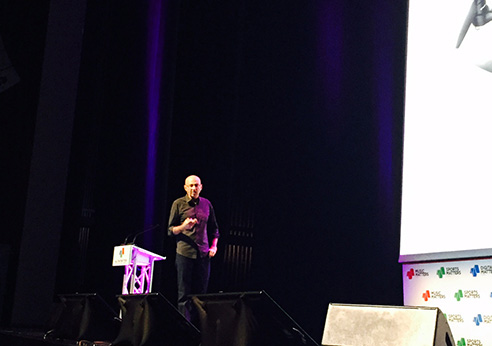STAFF WRITER on 21 September, 2016 at 06:09
At the All That Matters summit in Singapore, the ‘Marketing Matters’ track explored new trends and challenges faced by both brands and consumers in 2016, and sought to answer once and for all who will emerge victorious in the on-going tug of war between data and creativity.
Learn the language of your consumer

Jayant Murty, Director of Brand Strategy at Intel, states that decreasing attention spans make it more important than ever to be able to transact quickly in real time. However, one could argue that it isn’t necessarily attention spans which are dictating consumer and brand behaviour, but rather the expectations set by new, innovative, frictionless commerce experiences. But the main point remains.
“Almost a billion and a half people in the world are under 25,” he says. “We have to learn to transact in their language, which is so different to what many big brands are used to.” To Murty, this means “liberating” consumers, and treating them like partners, rather than simply somebody whose money you want. “If you’re going to be an intrusion, then you have to be useful,” he adds.
It’s not “mad men vs math men”

“At what point have you earned the right to sell to a consumer as a brand?” Asks Phil Townend, COO of Unruly. You can’t just barge into their lives on day one and start shouting offers, he says: “Use data to plot the points at which people have engaged with your content, and go from there.”
Townend cites the use of data in tracking consumer sentiment towards content as just one example of how the science of advertising can complement the art. Emotional responses to an asset can vary across regions and cultures, he says, in a way that a single subjective creator can’t always anticipate.
Echoing Jerry Smith (Regional President, OgilvyOne Asia Pacific) Towend predicts that as data becomes an evermore intrinsic component in the creative process, we’ll see a decline in mass marketing and a greater degree of tailored, personalised storytelling which takes into account the subtle ways in which different consumers react to different stimuli.
Sponsorship is a lot like dating
Influencer marketing isn’t the shiny new novelty that it once was, and one consequence of this is that brands now feel comfortable being a little more selective about who they work with.
Joe Kelly, Global Corporate Communications Lead for Huawei, has one simple rule for choosing influencer partners: “If I don’t like them, they’re not going anywhere.” Which might sound awfully glib, but Kelly believes that if he can’t personally connect with someone, then that working relationship is immediately off to the wrong start, and it will sour anything that they create together.
Adrian Toy, Regional Director of Marketing at Puma, agrees to a certain extent, describing the filter which the company applies to all new partners: “Do they fit our brand values? Does this person display the attributes we want to portray to our consumers?” He also points out that there is a difference between short-term influencer partners whose appeal is very of-the-moment, and longer-term influencers who command a more loyal audience.
The agency of the future is already here

“I’d like to disrupt our thinking on disruption and actually get back to focusing on the consumer,” says Jerry Smith, Regional President, OgilvyOne Asia Pacific. “Not by overcomplicating it, but by really drilling down to what matters to them.”
According to Smith, the “agency of the future” is out there already, combining left and right brain thinking and using data in creative ways. The agencies that succeed, he believes, will be the ones who keep the brand at the centre of what they do, who are there when the consumers look for them, and who continue to “surprise and delight… but not too often.”
“All consumers are not created equal,” he says, asserting that less mass marketing and more segmentation will be the key to understanding and fulfilling different needs and wants.